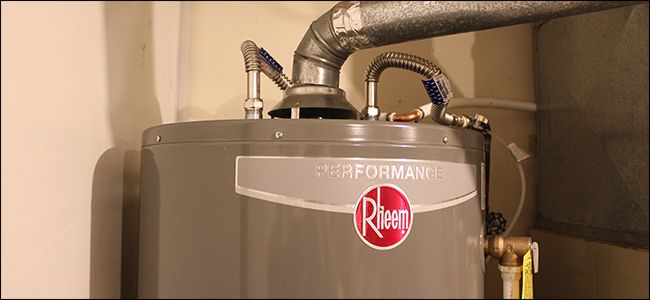Important Tips on Maintaining Your Home's Hot Water SystemSpecialist Guidance for Caring for Your Home's Hot Water System
Book ServicesHave you been interested in additional info about What Kind of Maintenance Do Water Heaters Need??

Warm water is crucial for day-to-day convenience, whether it's for a rejuvenating shower or cleaning meals. To ensure your hot water system runs effectively and lasts much longer, normal upkeep is vital. This write-up provides useful suggestions and insights on exactly how to maintain your home's hot water system to avoid disturbances and pricey fixings.
Introduction
Maintaining your home's warm water system could appear difficult, however with a few simple steps, you can ensure it operates smoothly for several years to find. This guide covers every little thing from comprehending your hot water system to do it yourself maintenance pointers and understanding when to hire expert help.
Value of Keeping Your Warm Water System
Routine maintenance not just extends the lifespan of your warm water system but additionally ensures it runs effectively. Disregarding maintenance can cause decreased performance, higher power costs, and even premature failing of the system.
Signs Your Warm Water System Needs Maintenance
Understanding when your warm water system needs interest can prevent major concerns. Look out for indicators such as irregular water temperature level, weird noises from the heating unit, or rustic water.
Comprehending Your Warm Water System
Prior to diving right into upkeep jobs, it's helpful to comprehend the fundamental parts of your warm water system. Typically, this consists of the hot water heater itself, pipelines, anode poles, and temperature level controls.
Monthly Maintenance Tasks
Regular monthly checks can aid capture small problems prior to they rise.
Purging the Hot Water Heater
Purging your water heater eliminates sediment buildup, boosting effectiveness and prolonging its life.
Monitoring and Replacing Anode Rods
Anode poles avoid corrosion inside the container. Checking and replacing them when broken is crucial.
Evaluating and Readjusting Temperature Level Settings
Adjusting the temperature level settings ensures optimum efficiency and safety and security.
Do It Yourself Tips for Upkeep
You can do a number of upkeep tasks yourself to keep your hot water system in leading problem.
Looking for Leakages
Regularly inspect pipelines and links for leakages, as these can bring about water damages and higher expenses.
Examining Pressure Relief Valves
Checking the stress safety valve ensures it functions properly and protects against excessive pressure build-up.
Insulating Pipelines
Shielding hot water pipes minimizes warm loss and can save energy.
When to Call a Specialist
While DIY upkeep is valuable, some concerns call for specialist expertise.
Complex Problems Needing Expert Assistance
Examples include major leakages, electric issues, or if your water heater is regularly underperforming.
Routine Professional Upkeep Conveniences
Specialist maintenance can include comprehensive examinations, tune-ups, and ensuring compliance with safety standards.
Conclusion
Normal maintenance of your home's hot water system is important for efficiency, longevity, and cost savings. By following these tips and understanding when to seek professional help, you can make sure a trustworthy supply of hot water without unexpected disruptions.
How to Maintain an Instant Hot Water Heater
Before tinkering with your hot water heater, make sure that it’s not powered on. You also have to turn off the main circuit breaker and shut off the main gas line to prevent accidents. Also turn off the water valves connected to your unit to prevent water from flowing into and out of the appliance. 2. When you’re done, you have to detach the purge valves’ caps. These look like the letter “T” and are situated on either side of the water valves. Doing so will release any pressure that has accumulated inside the valves while at the same time avoid hot water from shooting out and burning your skin. 3. When the purge valves’ caps are removed, you have to connect your hosing lines to the valves. Your unit should have come with three hoses but if it didn’t, you can purchase these things from any hardware or home repair shops. You can also get them from retail stores that sell water heating systems. Read the user’s manual and follow it to complete this task properly. When the hosing lines are connected, open the purge port’s valves. 4. You should never use harsh chemical cleaners or solutions when cleaning your unit. Make use of white vinegar instead. It should be undiluted and you’ll probably use about 2 gallons. 5. Now flush your water heater. This task should probably take about 40 minutes. We can’t give you specific directions for this because the procedure is carried out depending on the type, model and brand of your heater. With that being said, refer to the user’s manual. 6. When you’re done draining the unit, you have to turn off the purge port valves again. Remove the hosing lines that you earlier installed on each of the water valves. Put the valve caps (purge port) back in their respective places and be very careful so as not to damage the rubber discs that are found inside these caps. 7. Now that everything’s back in place, check your user’s manual again to find out how to reactivate your water heating system. 8. Once it is working, turn one of your hot water faucets on just to let air pass through the heater’s water supply pipes. Leave the tap on until water flows smoothly out of it. https://www.orrplumbing.com/blog/2014/september/how-to-maintain-an-instant-hot-water-heater/

Do you like reading up on How to Maintain a Hot Water Heater in a Few Simple Steps? Leave feedback down the page. We will be delighted to see your views about this review. In hopes that you come back again before long. Please take a moment to distribute this blog posting if you appreciated it. Thanks for being here. Don't hesitate to pay a visit to our blog back soon.
Call Today